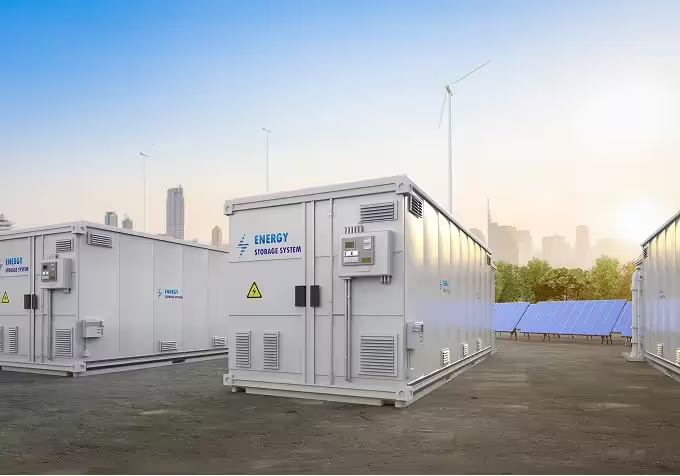FAT vs. SAT in BESS Projects: Why Site Acceptance Tests Matter More Than You Think
When it comes to battery energy storage systems (BESS), factory acceptance tests (FATs) and site acceptance tests (SATs) both play critical roles. Both tests are well-known across energy projects. While FATs help prevent known issues from leaving the factory, SATs ensure that what arrives at the site is safe, functional, and ready for operation. With BESS however, there are some differences, particularly in the depth and scope of testing. Here is what both tests are about.
.avif)
The Role of FAT: Your First Firewall
A factory acceptance test (FAT) verifies that equipment meets design and quality standards before it leaves the manufacturer. It’s an important step that still catches serious flaws.
Clean Energy Associates (CEA) found that during FATs:
- 28% of systems had fire detection or suppression issues
- 19% showed faulty auxiliary circuit panels
- 15% had thermal management defects
- 6% even failed capacity tests
The main goal of a FAT for BESS is to check that each rack delivers the expected power and energy as promised in the warranty. It also helps spot unusual patterns in voltage, current, or temperature, which could point to hidden design or assembly issues before the system ever leaves the factory.
FATs give manufacturers a controlled environment to detect and fix such issues. Expertise and spare parts are available right where the system is built. In other words, FAT prevents bad systems from being shipped in the first place.
However, FATs also have clear limits. They are often sample-based, not performed on every containerized unit. More importantly, FATs provide limited operational insight — because the system can’t be fully energized at the factory. There’s nowhere for the energy to go. As a result, most FATs are based on partial stimulation, which doesn’t capture real performance or safety behaviors under load.
In other words, a FAT is only testing individual components, not whether the entire BESS works as one integrated system. FAT is like checking that each part of a new car works — brakes, lights, engine. SAT is the test drive. Only then does it become clear if the car is running as it should.
Where FAT Falls Short: The Reality of Shipping
Even if equipment clears FAT, global supply chains introduce new risks. With many suppliers based in Asia, long transit routes mean higher exposure to dents, broken cables, or moisture ingress. The duration of the shipping process itself can also introduce problems. Batteries stored for long periods at a non-zero state of charge and without climate control begin to degrade. These issues occur after FAT and only surface once the system arrives on-site. In the case of degradation, issues might even show up only after some time.
Additional delays caused by customs, craning and setting schedules, or backfeed availability can push commissioning windows out by several months.
Most manufacturers only warrant their systems to be stored for three to four months from EX-FAT to energization, yet in practice, the process often takes longer. These factors make re-inspection and testing at the site essential. Relying solely on FAT results gives a false sense of security. A passed FAT doesn’t guarantee a flawless installation.
New to BESS? Find simple lessons, real-world tips, and useful tools to help you do your job better. Visit the BESS Learning Center.
The Role of SAT: Your Final Line of Defense
SATs and commissioning represent the final quality gate before commercial operation. They ensure not only that the system was built correctly, but also that it arrived intact, is able to deliver the energy it is licensed for and integrates safely with local infrastructure. Some SAT procedures are also required by grid operators, who need proof that the BESS performs as expected before approving grid connection and market participation.
In solar or wind projects, site acceptance testing is often a relatively straightforward process: verifying mechanical installation, grid connection, and power output. BESS projects are different. Batteries are dynamic systems with complex interactions between cells, inverters, HVAC, and control software. That means a BESS SAT requires far more testing depth and technical precision than a typical renewable project. It’s not enough to apply the same checklist used for solar or wind.
Part of a SAT for BESS can be digital commissioning. A digital commissioning report analyzes BESS data before operation. It can validate supplier claims on KPIs like state of health, capacity or round-trip efficiency. The report can also detect anomalies that on-site tests often miss. Find out more about digital commissioning.
Turning SAT Results into Real Assurance
A proper SAT should include:
- Full inspection of wiring, cabling, fire systems, cooling systems, and auxiliary panels.
- Verification of transport-related damages.
- Functional testing of all subsystems in real-world operating conditions.
During SAT, it’s crucial to stress-test the BESS under all expected operating patterns, not just standard charge and discharge cycles.
A real-world example with a large utility in Austria highlights why:
Their system was designed for intraday trading and frequency containment reserve (FCR) services but was also expected to handle vNE (vermiedene Netzentgelte, avoided grid fees) – a former German market incentive that rewarded BESS operators for reducing grid fees through heavy, repeated charge and discharge cycles. When the team ran this “hardest day test” during commissioning, the HVAC system couldn’t handle the thermal stress. Temperatures rose too high, the commissioning failed, and the HVAC had to be redesigned. The successful SAT took place six months later. If the SAT hadn’t been done before operation, the system would have failed in the field, causing even greater losses.
But what truly determines the value of SAT is not only the testing itself — it’s the contractual framework that supports it.
SATs are only as effective as the commitments behind them. Without the right provisions, even the most thorough on-site inspection can end in delays and finger-pointing.
That’s why every BESS contract should explicitly require:
- On-site spare parts availability, so repairs can start immediately.
- Qualified and consistent supplier personnel present during commissioning, ensuring technical expertise and site-specific continuity.
“Qualified” doesn’t just mean trained. It means sending the same personnel who know the site, the equipment, and its history, not rotating third-party technicians without context. This ensures quick issue resolution.
- The ability to repair or replace faulty components quickly on-site, preventing project downtime. It should also include specific, written tracking of all repairs and corrections, including any changes made to settings.
These clauses turn SAT from a procedural step into a true risk-mitigation mechanism. Without them, projects face a perfect storm of commissioning delays, rework costs, and early operational losses — the very issues SATs are meant to prevent.
Plan Smarter, Test Smarter
Get your BESS project right from the start. Download our free guide, Smart BESS Project Planning, for best practices on supplier selection, testing, and commissioning.
Why SAT Remains Essential — Even as Manufacturing Improves
The industry is maturing, with increasing standardization and higher manufacturing quality. This maturity reduces some risks, but it doesn’t eliminate them. It makes FATs less about filtering out “bad builds” and more about ensuring design compliance. Yet they still can’t predict transport damage or guarantee real-world readiness.
That’s where SAT remains indispensable — especially as systems scale in size, complexity, and commercial value.
Both FAT and SAT are essential parts of successful BESS project development. The two complement each other; one proves quality at the factory, the other confirms readiness in the field. But, it’s the SATs that operators should not underestimate. SATs validate the system under real-world conditions, where failures are costliest.
Key Takeaways
- FATs and SATs serve different purposes: FAT ensures design compliance; SAT ensures operational readiness and establishes baseline expectations on performance.
- Transport risks make thorough SATs unavoidable, regardless of FAT results.
- Commissioning with strong contractual support is the only way to guarantee system readiness.
Planning a new BESS project? Find out how digital commissioning strengthens your commissioning.
Sign up for the next live group demo and learn how TWAICE can transform your BESS operations. In just 30 minutes, you’ll get a demo of key features and use cases, and engage with our product experts for a live Q&A.



